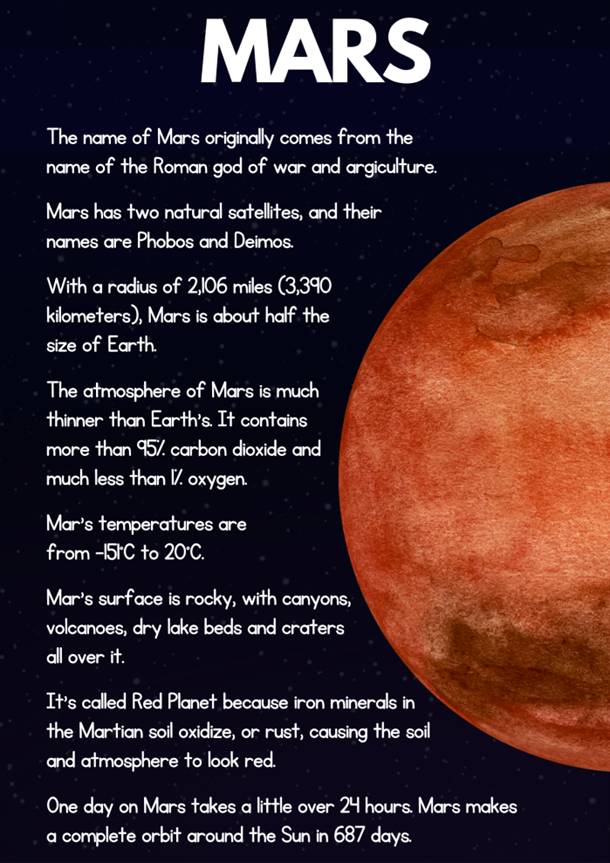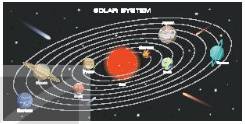Hãy nhập câu hỏi của bạn vào đây, nếu là tài khoản VIP, bạn sẽ được ưu tiên trả lời.

1. Planet Hope is located __________. (Hành tinh Hy vọng tọa lạc ở _____.)
Đáp án: A. in the Milky Way Galaxy (Dải Ngân Hà)
Thông tin: Planet Hope is in the Milky Way Galaxy.
(Hành tinh Hy vọng nằm trong Dải Ngân Hà.)
2. Planet Hope is ______________. (Hành tinh Hy vọng _____.)
Đáp án: C. three times the size of Earth (gấp 3 lần kích cỡ Trái Đất)
Thông tin: It is three times bigger than Earth.
(Nó lớn gấp 3 lần Trái Đất.)
3. The climate on Planet Hope is ______________. (Khí hậu trên Hành tinh Hy vọng _____.)
Đáp án: A. very hot all year around (nóng quanh năm)
Thông tin: ...so the weather is hot all year round...
(...vậy nên thời tiết nóng quanh năm...)
4. Hopeans have thick skin to protect then from ____________. (Hopeans có lớp da dày để bảo vệ họ khỏi _____.)
Đáp án: A. the heat (cái nóng)
Thông tin: They have thick skin to protect them from the heat.
(Họ có lớp da dày để bảo vệ họ khỏi cái nóng.)
5. Hopeans drink _______________. (Hopeans uống _____.)
Đáp án: B. petrol from under the ground (dầu từ dưới đất)
Thông tin: ...they drink a type of petrol from under the ground.
(... Họ uống một loại dầu từ dưới lòng đất.)

1. galaxy 2. Neptune 3. outer 4. unidentified flying object 5. planet 6. spacecraft 7.alien 8.pilot 9. meteor 10. mineral 11. gemstone 12. orbit

Tham khảo
Hello everyone, today I will talk about Mars, the 4th planet in our solar system. The name of Mars originally comes from the name of the Roman god of war and agriculture. It may not seem like these two things go together, but they do. Mars protected those who fought for their communities and stayed home to raise crops for food. Mars has two natural satellites, and their names are Phobos and Deimos. With a radius of 2,106 miles (3,390 kilometers), Mars is about half the size of Earth. The atmosphere of Mars is much thinner than Earth's. It contains more than 95% carbon dioxide and much less than 1% oxygen. Mar's temperatures are from -151°C to 20°C. Mars is colder than Earth. If you were to stand on the surface of Mars on the equator at noon, it would feel like spring at your feet and winter at your head. Mar's surface is rocky, with canyons, volcanoes, dry lake beds and craters all over it. It's called Red Planet because iron minerals in the Martian soil oxidize, or rust, causing the soil and atmosphere to look red. One day on Mars takes a little over 24 hours. Mars makes a complete orbit around the Sun in 687 days. Thanks for listening.

B. Choose the correct answers.
1. What is the passage about?
A. Planets in our solar System
B. The difference between Earth and other planets
C. Space exploration to find habitable planets
D. NASA’s missions to explore the outer planets
2. The Kepler space telescope is looking for__________
A. new planets in our galaxy
B. life on other planets
C. liquid water on other planets
D. Earth-sized planets in the solar System
3. Kepler has found five planets that__________.
A. has water and air
B. are similar to Earth
C. are not too far away from the Earth
D. are not in our solar System
4. The Kepler team predict that they will need__________ to find an Earth-like planet.
A. three years and possibly longer
B. as much as three years
C. no more than three years
D. approximately three years
5. What are the primary factors that make a planet habitable?
A. Liquid water and living things
B. Size and distance from the Sun
C. Hot temperature and weak gravity
D. Strong gravity and too much air
6. How much does the Kepler mission cost?
A. Exactly $600 million
B. About $600 million
C. More than $600 million
D. Less than $600 million
7. Which of the following statements is NOT true?
A. The planet can support life if it has water and air.
B. A very small planet will not have enough air.
C. Earth is four times as big as Neptune.
D. Kepler mission is scheduled to end in 2013.

sửa cho bạn chút :v
d. Mai attend ∅ Hue University.
h. I hope you have a lovely time and ∅ good weather
Fill in the blanks with a/an/the or Ø
a. On our journey to CaMau, we crossed ___the___________ Hau River
b. We have lost _____the_________ key to our room.
c. It is rather _____an_________ interesting film.
d. Mai attend ______the_____ Hue University.
e. Jack plays _______the____ violin very well
f. This professor worked in _______Ø______ Africa for five years.
g. In our solar system ____Ø______ Mercuty is closet to _____the____ Sun
h. I hope you have __a___ lovely time and ______a________ good weather
i. Among the ethnic minorities, _____the______ Tat have the largest population
j. Viet nam is ____a____ multicultural country with 54 ethnic groups.

1. moons
2. rocky surfaces
3. objects
4. huge
5. rings
1. Many of the planets in our solar system have moons.
(Nhiều hành tinh trong hệ mặt trời của chúng ta có mặt trăng.)
2. The four inner planets are quite small and have rocky surface.
(4 hành tinh ở trong nhỏ hơn và có bề mặt đá gồ ghề.)
3. The asteroid belt has millions of rocky objects.
(Vành đai của tiểu hành tinh có hàng triệu vật thể bằng đá.)
4. The outer planets are huge and mostly made up of gas.
(Những hành tinh bên ngoài lớn và chủ yêu được tạo thành từ khí.)
5. These outer planets all have thick layers of clouds and rings around them.
(Những hành tinh bên ngoài này có những lớp mây dày và những vành đai xung quanh chúng.)


RELATIVE CLAUSE
Our solar system is in a galaxy. The galaxy is called the Milky Way.
-> Our solar system is in a galaxy that is called the Milky Way
→ Our solar system is in a galaxy that is called the Milky Way.